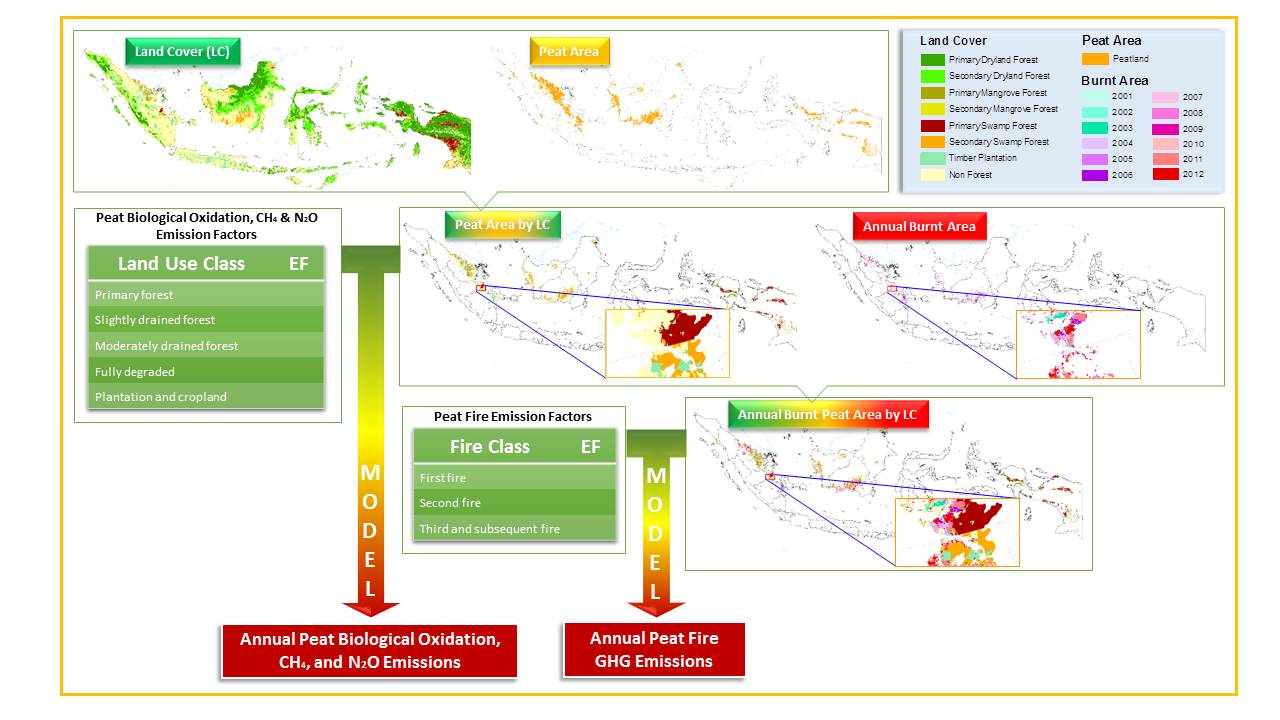The Standard method—peatland GHG emissions describes the process used by INCAS for quantifying GHG emissions from peatland in Indonesia. This includes data collation, data analysis, quality control, quality assurance, modelling, and reporting.
For this standard method, peatland is defined as lands with organic soil and included in the Ministry of Agriculture’s peat map. Peatland GHG emissions are estimated annually for the following sources and gases using spatial data developed using the Standard method—spatial allocation of regimes and emission factors:
- biological oxidation of drained peat: CO2-C, CO2-e
- peat fire: CO2-C, CO2, CO, CH4
- direct emissions from drained organic soils: N2O, CH4
The approach is summarised in the following figure.
Peat biological oxidation emission factors are from the IPCC 2013 Wetlands Supplement that provides separate emission factors for CO2, DOC, and CH4. Emission factors for peat fires have been adopted from research conducted in Central Kalimantan.
Outputs are expressed as tonnes for each GHG or as tonnes CO2-e emissions. Time periods for reporting can be specified to meet reporting requirements.
Full details of the Standard method—peatland GHG emissions are available here.


